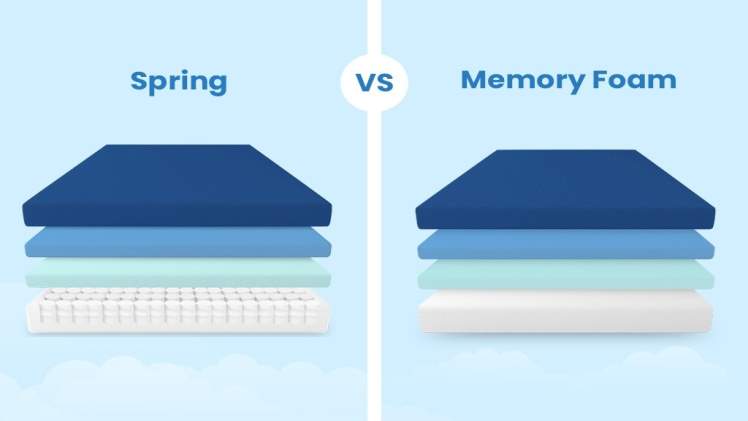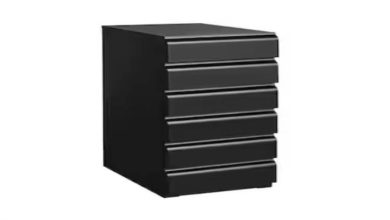Spring Vs Memory Foam Mattress: Which One is Better?

Description
Sleep is the actual “me time” that one can get since it reduces stress, repairs the body overnight and leaves one refreshed. Sleep quality significantly depends on the mattress type used, among other things.
The irony is you could lose sleep over a mattress, be it from choosing the wrong one among the numerous options in the market or from the lack of knowledge.
In the war of mattresses, one of the most popular questions is “Spring Vs Memory foam mattress: Which one is better?” Read on to learn the answer to this question.
Spring Mattress
Introduced in 1871, the spring mattress is one of the traditional mattresses. Also known as an Innerspring mattress, it is made of metal coils and springs cushioned with foam and upholstery to prevent the sleeper from feeling the spring or the coils. It is popular for the plushness, support and bounce that it offers.
There are different types of spring mattresses depending on the kind of springs and coils used and their arrangement, such as Bonnell coil, Offset coil, continuous coil and pocket coils.
Features:
- The springs and coils enable airflow within the mattress offering temperature control, which is especially useful for hot sleepers.
- An innerspring mattress prevents the body from sinking into the bed because of its firmness.
- The materials used in standard spring mattresses are economical, making the mattress an affordable option.
- Spring mattress generally lasts for about 5-10 years.
Suitable for:
- Combination sleepers who don’t stick to a particular sleeping position, stomach sleepers and hot sleepers.
- People looking for a plush comfort mattress.
Foam Mattress
Created by NASA in the 1960s, memory foam is a type of foam mattress. Memory foam or viscoelastic polyurethane foam is made of polyurethane foam treated with chemicals to bring it to the required density and viscosity. Polyurethane enables the mattress to mould to the body while relieving the pressure points.
Since memory foam is also temperature sensitive, manufacturers tend to add cooling additives like gel, plant oils, copper or graphite. Based on the additives added, the types of memory foam mattresses are traditional memory foam, gel memory foam, open cell foam, plant-based memory foam and memory foam with cooling additives.
Features:
- Memory foam’s density makes it a highly durable material and reduces sagging.
- Memory foam takes the shape of your body, offering optimum support to all body parts uniformly. Memory foam is less bouncy due to its slow recovery time.
- Since memory foam contours to your body, it provides pressure relief and aligns with the spine offering better support and alleviating joint and back pain.
- It offers better motion isolation than spring mattresses.
- Depending on the material used, memory foam mattresses are available at various prices.
- Memory foam mattress lasts for about 8-10 years and varies depending upon the type.
Suitable for:
- Side sleepers and back sleepers; however, stomach sleepers can opt for firmer memory foam beds.
- People looking for a mattress that can help relieve back pain
Conclusion
Choosing a mattress depends on qualities like mattress firmness like a firm mattress, medium firm mattress or soft mattress and materials used like spring, foam, coir, latex, etc. Individuals’ preferences and priorities based on age, health, comfort, price etc., also play a vital role.
Memory foam mattresses tend to be pricier than spring mattresses. However, a wide variety of options are available under both mattresses to combat price criteria.
With the evolvement of technology, types like hybrid mattresses even offer customisation options to a customer. While spring mattresses vs foam mattresses have been a long-standing debate, it all comes down to what a particular individual requires from the mattress.





